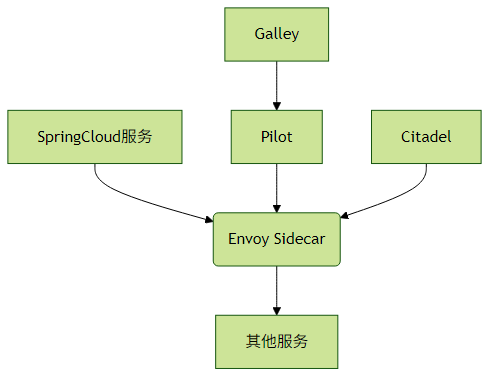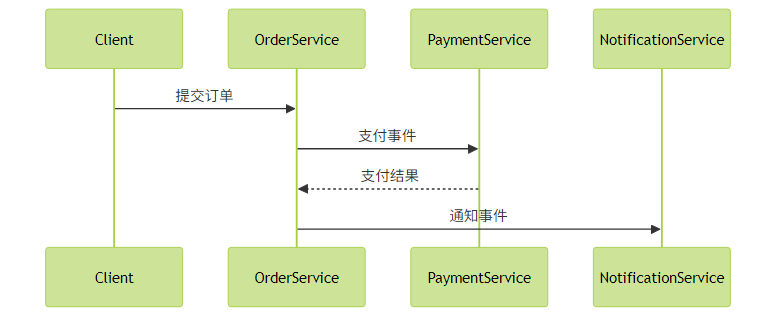SpringCloud高级特性:服务网格、Serverless与响应式编程
SpringCloud高级特性实战:服务网格、Serverless与响应式编程
一、服务网格:Istio深度集成
1.1 Istio架构解析
Istio作为服务网格(Service Mesh)的标杆产品,为SpringCloud微服务提供了透明的流量管理、安全控制和可观测性能力。其核心架构由数据平面(Envoy代理)和控制平面组成:

关键组件作用:
- Pilot:服务发现与流量管理
- Citadel:服务间认证与证书管理
- Galley:配置验证与分发
1.2 集成实践
步骤1:注入Sidecar
# 自动注入
kubectl label namespace default istio-injection=enabled
# 手动注入
istioctl kube-inject -f deployment.yaml | kubectl apply -f -步骤2:流量管理配置
apiVersion: networking.istio.io/v1alpha3
kind: VirtualService
metadata:
name: product-service
spec:
hosts:
- product-service
http:
- route:
- destination:
host: product-service
subset: v1
weight: 90
- destination:
host: product-service
subset: v2
weight: 10实践建议:
- 生产环境建议开启mTLS双向认证
- 使用Canary发布时配合Prometheus监控指标变化
合理设置Circuit Breaker参数:
trafficPolicy: outlierDetection: consecutiveErrors: 5 interval: 10s baseEjectionTime: 30s
二、Serverless架构实现
2.1 Spring Cloud Function实战
Spring Cloud Function提供了函数即服务(FaaS)的抽象层,支持AWS Lambda、Azure Functions等平台。
典型事件处理函数:
@Bean
public Function<Flux<String>, Flux<String>> uppercase() {
return flux -> flux.map(String::toUpperCase);
}
@Bean
public Consumer<String> logEvent() {
return event -> System.out.println("Received: " + event);
}部署到AWS Lambda:
# 打包
mvn clean package -Paws
# 部署
aws lambda create-function \
--function-name myFunction \
--runtime java11 \
--handler org.springframework.cloud.function.adapter.aws.FunctionInvoker \
--zip-file fileb://target/my-app-0.0.1-SNAPSHOT-aws.jar2.2 事件驱动架构模式
订单处理示例:

实践建议:
- 使用Dead Letter Queue处理失败消息
- 事件设计遵循"事件携带状态转移"原则
- 为关键业务事件实现幂等处理
三、响应式编程深度整合
3.1 WebFlux核心机制
Spring WebFlux基于Reactor库实现了响应式编程模型,对比传统Servlet模型:
| 特性 | WebMVC | WebFlux |
|---|---|---|
| 编程模型 | 命令式 | 声明式 |
| 线程模型 | 每个请求占用线程 | 少量线程处理多请求 |
| 背压支持 | 无 | 内置支持 |
| 适用场景 | 传统CRUD | 高并发IO密集型 |
典型Controller:
@RestController
@RequestMapping("/products")
public class ProductController {
@GetMapping("/{id}")
public Mono<Product> getProduct(@PathVariable String id) {
return productRepository.findById(id);
}
@GetMapping
public Flux<Product> listProducts() {
return productRepository.findAll()
.delayElements(Duration.ofMillis(100));
}
}3.2 响应式数据访问
Reactive MongoDB配置:
@Configuration
@EnableReactiveMongoRepositories
public class MongoConfig extends AbstractReactiveMongoConfiguration {
@Override
public MongoClient reactiveMongoClient() {
return MongoClients.create("mongodb://localhost:27017");
}
@Override
protected String getDatabaseName() {
return "ecommerce";
}
}复杂查询示例:
public interface ProductRepository extends ReactiveMongoRepository<Product, String> {
Flux<Product> findByCategoryAndPriceLessThan(String category, double price);
@Query("{ 'name': { $regex: ?0 } }")
Flux<Product> findByRegexName(String regex);
}实践建议:
- 避免在响应式链中阻塞操作(使用
publishOn切换线程) - 合理设置背压策略(BUFFER/DROP/LATEST)
使用WebClient进行服务间调用:
WebClient client = WebClient.builder() .baseUrl("http://inventory-service") .build(); Mono<Inventory> inventory = client.get() .uri("/{productId}", productId) .retrieve() .bodyToMono(Inventory.class);
四、性能优化实战
4.1 服务网格优化
Envoy调优参数:
resources:
limits:
cpu: "2"
memory: "1Gi"
requests:
cpu: "500m"
memory: "512Mi"4.2 响应式系统监控
关键指标监控:
- 订阅者数量(reactor.flow.active)
- 处理延迟(reactor.flow.duration)
- 背压事件(reactor.flow.requested)
Grafana监控面板配置:
sum(rate(reactor_flow_duration_seconds_sum[1m])) by (method)
/
sum(rate(reactor_flow_duration_seconds_count[1m])) by (method)五、总结与演进路线
技术选型建议:
| 场景 | 推荐方案 |
|---|---|
| 需要精细流量控制 | Istio + SpringCloud Gateway |
| 事件驱动业务 | Spring Cloud Stream + Kafka |
| 高并发IO场景 | WebFlux + Reactive Repository |
| 突发流量处理 | Spring Cloud Function + AWS Lambda |
演进路线:
- 从传统SpringMVC逐步迁移到WebFlux
- 先实现关键服务的Serverless化
- 在复杂微服务场景引入服务网格
- 建立完整的可观测性体系
通过合理运用这些高级特性,可以构建出更弹性、更高效的云原生微服务架构。